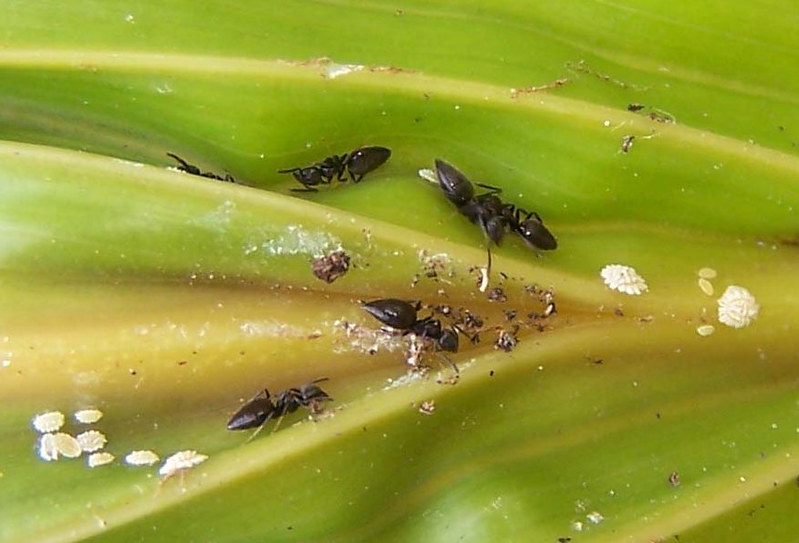Enjoy lovely flowers during the spring and summer with ice plants, a perennial succulent. These low-maintenance plants do well with little care, although there are some pests that can harm the plants. Early detection is key to treating pests on ice plants. Learn what bugs are likely a problem and how to control and prevent an infestation on ice plants.
Common Ice Plant Pests
Mealybugs
Mealybugs are pests often found on houseplants, but they can also be trouble for outdoor plants like Delosperma. Warm, humid environments are more welcoming to mealybugs. These pests, also known as scale, are sap suckers that latch onto plants and are often found where leaf stems meet the main stems. They appear as a thick, white mass.

Photo by Scot Nelson
Treating Mealybugs on Ice Plants
Treat Mealybugs on ice plants by spraying the plant with insecticide. Continue to apply insecticide for several weeks to treat all pests and larvae and prevent future outbreaks.
Preventing Mealybugs on Ice Plants
Prevent mealybugs on ice plants by removing debris and dead growth to allow for improved airflow. Routinely inspect the plant for signs of mealybugs and spray the plant with horticultural oil as a preventative measure if you have had trouble with mealybugs in the past.
Whiteflies
Whiteflies are tiny sap-sucking pests. They latch onto plants, like Delosperma and suck nutrients from the stems and foliage. Discolored, dead, or dying growth are signs of whiteflies. Honeydew or waste are also signs of a whitefly infestation on ice plants. Whitefly waste can lead to further problems, like mold, so catching and treating whiteflies early is essential to prevent further problems.
Treating Whiteflies on Ice Plants
Spray a plant infested with whiteflies with insecticide. Continue to apply insecticide to ensure all mature pests and their larvae are treated, so whiteflies do not continue to infest plants.
Preventing Whiteflies on Ice Plants
Feeding ice plants a fertilizer high in nitrogen can increase the odds of attracting whiteflies. Ice plants are not heavy feeders, and they do best with balanced plant food. Too much nitrogen can promote weak, leggy growth, which is susceptible to pest damage.
Vine Weevil
Vine weevils are winged insects, although mature vine weevils cannot fly. These pests eat the outer edges of foliage, creating irregularly shaped notches in leaves. In extreme infestations, leaves will drop, and the plant may die due to a lack of chlorophyll. Evergreen plants in warm environments are more likely to be damaged by vine weevils.
Treating Vine Weevil on Ice Plants
Treat vine weevils by removing them from plants as they are spotted. Crush the pests to kill them, preventing further damage. Spray infested plants with insecticide or horticultural oil to wipe out unseen pests or larvae.
Preventing Vine Weevil on Ice Plants
Vine weevils like damp conditions, so remove mulch and debris to improve airflow and reduce hiding spaces. Only water ice plants when needed to support new growth, and keep the soil as dry as possible to make the environment less hospitable to pests like vine weevils.
Ice Plant Pests Chart
|
Pest |
Identifying |
Treating |
|
Mealybugs |
Small, soft-bodied insects covered in a white, powdery or waxy coating |
Spray the plant with insecticide |
|
Whiteflies |
Tiny, white, powdery wings and yellowish bodies |
Spray the plant with insecticide |
|
Vine Weevil |
Small, black or dark brown beetles, distinctive short snout and elbowed antennae |
Remove them from plants as they are spotted and crush the pests to kill them |
Sources: "Delosperma: A Growing Guide For Ice Plant." Garden Design. gardendesign.com
 |
Author Alison Cotsonas - Published 06-05-2023 |
